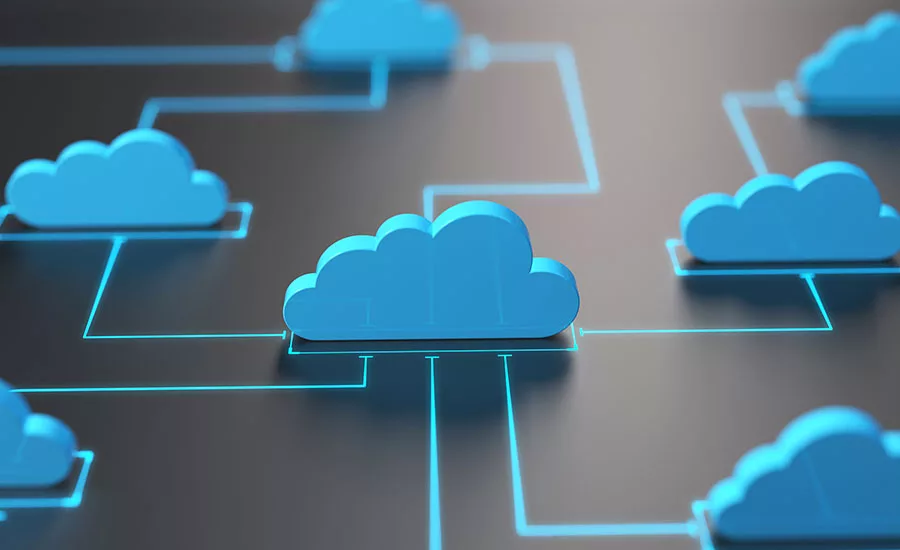Cloud Solutions: Four Key Areas of Focus

When it comes to cloud solutions, there are many questions regarding the migration process. To help with the transition, end users need to have a full understanding of what cloud is and what they would be getting. The security industry is conservative and can be slow to make changes, however it’s not a question of ‘if’ you might transfer to cloud, but ‘when.’ Moving to cloud starts with an understanding of operation and functionality. Education and research come next, honing in on what you are looking for and what a cloud solution can offer to meet your physical security requirements.
To help with the transition, what are a few key elements to focus on, when starting to have a conversation about cloud? In an effort to provide guidance, these four cloud facts should help in deciding if a cloud solution is best for you.
1. Cloud Provides Cost-Saving Solutions
Eliminating local system components makes the cloud less complicated, but it also makes system maintenance more cost-effective overall. Transitioning to the cloud will save you money in both the long and short term. A subscription-based model will save on setup and management fees, as well as human resources. With a cloud solution, because you are eliminating the need for NVRs, video management systems, access control servers and panels, you will be eliminating four major expenses.
Additionally, cloud provides a more scalable solution, which means you will be able to add a few cameras or doors to an existing system without having to purchase additional hardware. This allows for a more flexible approach to your security needs – meaning you only pay for what you use. You will no longer have to pay for an NVR that supports 60 cameras, while only having 30 installed.
2. Cybersecurity Risks Are Alleviated
You might think because you’re connecting a device to the cloud, to something outside of your network, that it poses more security risks than on-premise storage. However, cloud providers have been working for many years to develop technology to encrypt the data from the moment it’s captured through the transportation to the cloud. This gives you end-to-end security, which is safer than an onsite system. In addition, onsite systems can be prone to damage through theft, server issues and hacking – which are not issues with a cloud system.
When choosing a cloud provider, look for organizations with experience and resources that invest significantly in cybersecurity annually. Consider asking how much a provider will spend on cybersecurity and data privacy every year, as well as if they have a designated cyber team and how big that team is. Your cloud provider will likely be able to invest significantly more into cybersecurity development than you might be able to on your own.
3. Cloud Requires Minimal Bandwidth
The cloud platform you select should run on a single, open architecture to deliver faster, more secure and more reliable services. What you might not know about cloud-based systems is that they can operate without cloud-based video storage. A robust and open platform will allow video to be stored on the camera, or gateway device – enabling the system to run using little to no bandwidth. If you choose to store video on a camera or gateway device, you can transport it over the network on-demand.
You should also look for a solution offering a hybrid mode – a combination of on-device and cloud storage. Hybrid mode is customizable to your needs and allows for video to be stored on the cloud, or locally on a bandwidth schedule. At the end of the day, cloud storage offers a number of options, all requiring little bandwidth.
4. Cloud Requires Less Components
Simply put, cloud solutions are easier and less complicated than onsite systems. Due to the plug and play nature of the system, cloud solutions streamline setup and eliminate the need for both an NVR and VMS, alleviating hardware maintenance and management costs. Additionally, there are no access control servers, panels or readers to install or maintain – thus removing costly installation and maintenance fees.
Generally, cloud systems are easier to maintain over a period of time. Once your device is connected, you’ll know instantly if there’s a problem. You can simply log onto the cloud and view your network status from anywhere. With 24/7 monitoring, you won’t have to worry about cyber-attacks or updates – which also alleviates painful upgrade costs.
As the industry moves forward with adopting cloud-based systems, end users should focus on learning what solutions will best fit their business model. When it comes to cloud, it’s important to not be left behind.
Looking for a reprint of this article?
From high-res PDFs to custom plaques, order your copy today!








